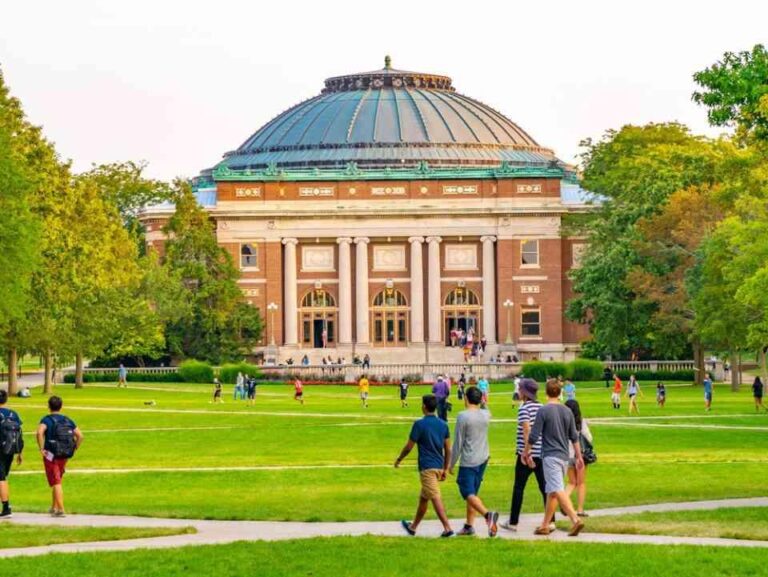A recent study highlights growing concerns over the impact of recently implemented tariff and visa policies on the United StatesŌĆÖ education sector, one of the nationŌĆÖs most significant exports. As international student enrollment faces new hurdles, experts warn that these changes could jeopardize the economic and cultural benefits derived from attracting talent worldwide. The findings raise urgent questions about the future competitiveness of U.S. educational institutions in the global arena.
US Education Industry Faces Decline Amid New Tariff and Visa Restrictions
The recent implementation of increased tariffs on educational materials and stricter visa policies for international students is triggering alarm bells across American academic institutions. These changes threaten to disrupt what has long been a lucrative sector for the U.S.ŌĆöits education exports. Universities and colleges, particularly those heavily reliant on international tuition revenue, are now facing significant financial uncertainties, risking campus program cuts and reduced research funding.
Key impacts on the sector include:
- Decline in international student enrollment: New visa restrictions have led to prolonged application processes and increased rejections, deterring prospective students from abroad.
- Rising operational costs: Tariffs on educational products and technology equipment are forcing institutions to reallocate budgets away from academic programming towards compliance and supply chain adjustments.
- Competitive disadvantage globally: As rival countries adopt more open policies, the U.S. risks losing its standing as a preferred destination for scholars and researchers.
| Impact Area | Before Policy Change | Projected After Policy Change |
|---|---|---|
| International Enrollment | 1 million students annually | Drop of up to 20% |
| Tuition Revenue | $40 billion | Estimated $8 billion loss |
| Research Funding | High | Potential cuts or freezes |
Impact on International Students Signals Economic and Cultural Consequences
The shift in tariff and visa regulations is not merely a bureaucratic change but a profound signal of potential disruption to the U.S. economy and its diverse cultural fabric. International students contribute over $45 billion annually to the American economy through tuition, housing, living expenses, and other expenditures, making education one of the nation’s top exports. The tightening of policies threatens to reduce the influx of these students, which in turn could lead to significant revenue shortfalls for universities and local economies that depend heavily on this demographic.
Beyond economics, the decline in international student enrollment poses cultural concerns. These students enrich campuses by fostering global perspectives, encouraging cross-cultural dialogue, and building long-term international relationships. The following table outlines the wide-ranging benefits tipped at risk if current policies persist:
| Benefit | Impact if Enrollment Drops |
|---|---|
| Economic Boost | Loss of billions in local and state economies |
| Cultural Exchange | Diminished global awareness and diversity on campuses |
| Research Innovation | Reduction in international collaboration on scientific projects |
| Workforce Pipeline | Fewer skilled graduates entering U.S. industries |
Universities Urged to Adapt Recruitment Strategies and Support Services
In response to shifting tariff and visa regulations, higher education institutions across the United States are being called upon to overhaul their recruitment strategies to maintain their competitive edge in the global education market. Universities are encouraged to expand their outreach beyond traditional regions, incorporating digital platforms and virtual recruitment fairs that can engage prospective students regardless of geographical barriers. Additionally, there is a rising emphasis on tailoring messaging to address concerns related to new policies, ensuring international students feel welcomed and supported throughout the application process.
Equally important is the enhancement of support services aimed at international students, as increased regulatory hurdles amplify the need for comprehensive assistance. Universities are advised to bolster resources such as visa advisory centers, cultural integration programs, and academic counseling specifically designed for non-resident learners. The following highlights key areas of focus for institutions adapting to these challenges:
- Customized visa guidance: Dedicated personnel to navigate evolving policies.
- Expanded mental health and wellness programs: Addressing uncertainty and transition stress.
- Enhanced language support: Offering tailored language workshops and tutoring.
- Community-building initiatives: Facilitating peer networks and mentorship opportunities.
Policy Recommendations Focus on Balancing Security with Educational Opportunity
Experts urge policymakers to adopt a nuanced approach that prioritizes both national security and the economic vitality generated by international students. Streamlined visa processing and transparent communication channels are recommended to reduce bureaucratic delays without compromising thorough background checks. Furthermore, promoting partnerships between U.S. universities and foreign governments can facilitate trust-building and information sharing, fostering a safer yet more welcoming academic environment.
Additional strategic measures include:
- Introducing flexible visa categories tailored to varied academic and research fields
- Enhancing support systems that assist international students in acclimating to U.S. campus life
- Leveraging technology to improve vetting procedures with minimal impact on application timelines
| Policy Area | Current Challenge | Recommended Action |
|---|---|---|
| Visa Processing | Lengthy delays and uncertainty | Implement expedited review systems |
| National Security | Risk of inadequate vetting | Use collaborative intelligence networks |
| Student Support | Insufficient integration resources | Expand cultural and academic programming |
To Wrap It Up
As the United States navigates evolving tariff and visa policies, the impact on its education sector becomes increasingly clear. Once a cornerstone of American soft power and economic strength, the influx of international students faces unprecedented challenges. Policymakers and industry leaders now confront the urgent task of balancing national interests with the need to maintain the countryŌĆÖs global educational appeal. The coming months will be critical in determining whether the U.S. can sustain its position as a premier destination for higher education or risk ceding ground to international competitors.







